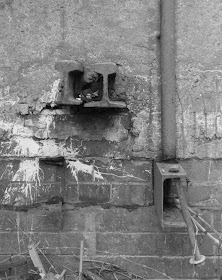Four of Ekco's five
round radios (not the AD75) were available for special order in a variety of colours, the cabinet formed of urea formaldehyde instead of the usual Bakelite. There are understood to be extant just three genuine colour A22s - two red ones, and a marbled green one, this last made especially for the 1946
Britain Can Make It exhibition. There are known to survive three genuine green AD65s, and possibly a genuine ivory one. Beyond that, all sightings of colour Ekcos are either speculative, or of copies/fakes.
(A genuine green AD65 supposedly sold for £17,500 at Academy Auctioneers, Ealing, in 1993, but this is questionable: the set reappeared at Sotheby's but failed to reach its reserve. Another, with no chassis, sold at Christie's in 1995 for £3,375 including buyer's premium.)
Gerry Wells, who died in December 2014, famous in vintage radio circles, made wooden reproductions of Ekco AD65s. The presenter of a TV programme on which Wells appeared said that Bakelite had been used by Ekco as it was impossible to make the round shape of the cabinets in wood. Gerry proved the theory wrong by forming the front panel from turned and routed MDF and the cylindrical body from steamed plywood.
The Wells copies are proper valve sets, made in batches of 15. The first six sets, made in 1993, were exact copies of the original, including the chassis. Some later sets were jointly made by Gerry, Eileen Laffey and Tina Sandell, of the British Vintage Wireless and Television Museum, Dulwich. Some were fitted with a solid state FM front end by Benito di Gravio, also of the museum. A final batch, of 17 sets, with the correct chassis but an added FM head, was made in 2006 by Wells, Ian Johnson, and di Gravio.

The cabinets were spray-painted in a variety of colours, most commonly marbled green, red and ivory - the colours of the rare genuine survivors. Others were sprayed brown, black, light green, yellow, white, and blue. (A blue one was given to John Paul Getty II, a patron of the museum.) The very first set was marbled green. Eileen's own one-off set was Marks & Spencer green, and Tina's one-off set was a slightly metallic dark blue. The final batch included one each in silver, chrome, camouflage, two-toned metallic, and pink. The very last set was ivory.

The set pictured was Tina's own. The chassis was built, under the tuition of Gerry, by Sandell, who started as a Saturday girl at the museum in 1993. It has a FM front end, and was completed by Benito (by whom it is signed) in July 1996. Tina, from whom the set was acquired, confirmed that Wells had intended to make more AD65 copies than the 152 that are thought to have been made. Someone, though, took from the museum the form used to guide routing of the front panels.
The cabinet of the AD65 was largely designed by the architect Wells Coates. The original sets have printed on the back that they were made at the Ekco works, Southend-on-Sea. In a play on names, and referring to the spray-painting process, a Gerry Wells reproduction AD65 sports a label stating that the set is a RAD65, a "Wells Coated Radio", made in Dulwich.




















































